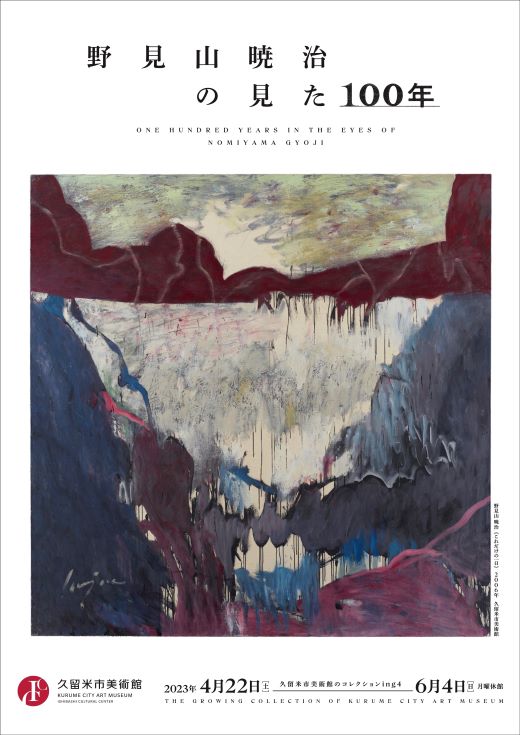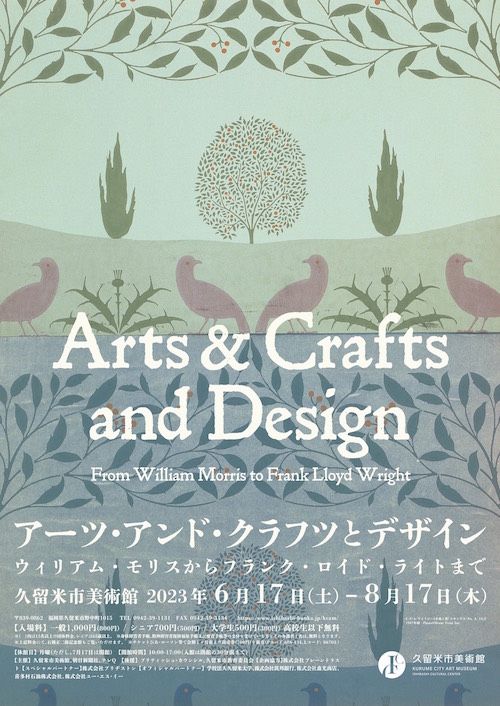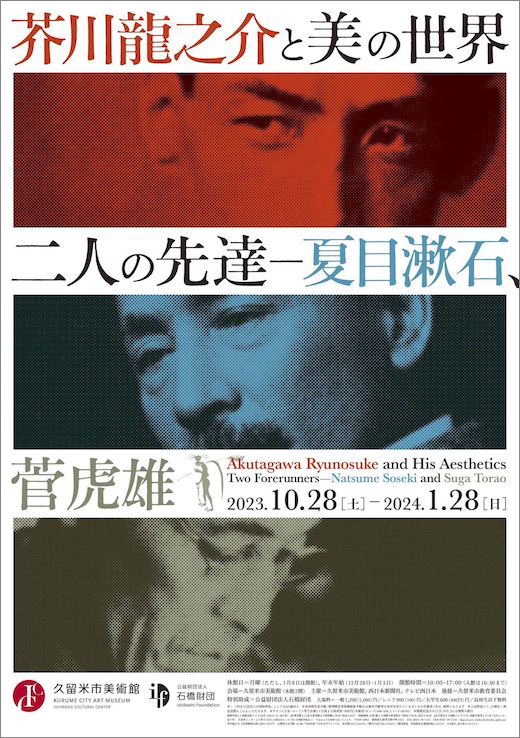Exhibition
April 2023 - March 2024
-

The Growing Collection of Kurume City Art Museum One Hundred Years in the Eyes of Nomiyama Gyoji2023.4.22(Sat)‐2023.6.4(Sun)
“The Growing Collection of Kurume City Art Museum” is a series of exhibitions in which our collection, which continues to grow, is presented.The main focus of the fourth show in this series is the painter Nomiyama Gyoji (b. 1920), who was born in Iizuka, Fukuoka and, at over 100 years of age, continues to create art. With thirteen works by Nomiyama in the Kurume City Art Museum collection, of which eight were donated by the artist, and six works on long-term loan from The Nishi-Nippon City Bank as the pivot, the development of Japanese yōga (Western-style painting) Nomiyama has witnessed over the past one hundred years is traced.
-

Arts & Crafts and Design: From William Morris to Frank Lloyd Wright2023.6.17 (Sat)-2023.8.17 (Thu)
Regarding a period of “craftsmanship” as his ideal, William Morris pursued beautiful designs in daily life. The Arts & Crafts Movement launched by British artists who empathized with this idea eventually led to products such as those produced by Liberty Retail Limited. This spread further to Tiffany Studios and the architect Frank Lloyd Wright in the US and unfolded diversely all over the world. The spread of Arts & Crafts is introduced through approximately 170 exhibits of textiles, wall paper, furniture, tiles, glass, accessories, etc.
-

Yearning for Visions - Hallucination Expressionists - From Kaita Murayama and Shoji Sekine to Present Times2023.8.26 (Sat)-2023.10.15(Sun)
“Yearning for visions” is how we have tentatively described the feelings of those who are motivated to create by a sensation that “something” is approaching from somewhere beyond human knowledge or by a spiritual experience. In this exhibition, by focusing on those who single-mindedly depict God, those who pictorialize a hallucination, and those who attempt to express invisible “light” in color and reexamining benchmarks befitting each work, i.e., “spiritual yardsticks,” we hope to rediscover and reappreciate the tremendous potential such works possess.
-

Akutagawa Ryunosuke and His Aesthetics, Two Forerunners—Natsume Soseki and Suga Torao2023.10.28(Sat)‐2024.1.28(Sun)
The literature by Akutagawa Ryunosuke (1892–1927) shares a common feature with that of Natsume Soseki (1867–1916) in that the literary works by both writers are deeply related to fine art. Soseki in his later years detected Akutagawa’s talent, and Akutagawa looked up to Soseki as his mentor. Born in Kurume, Suga Torao (1864–1943) taught Akutagawa German at the First High School under the prewar education system and was close friends with Soseki. Suga was respected by Soseki and Akutagawa as a calligrapher too. In this exhibition, with Akutagawa’s involvement with art as the pivot, the art world viewed through Akutagawa’s eyes and the rapports among the three are introduced.
